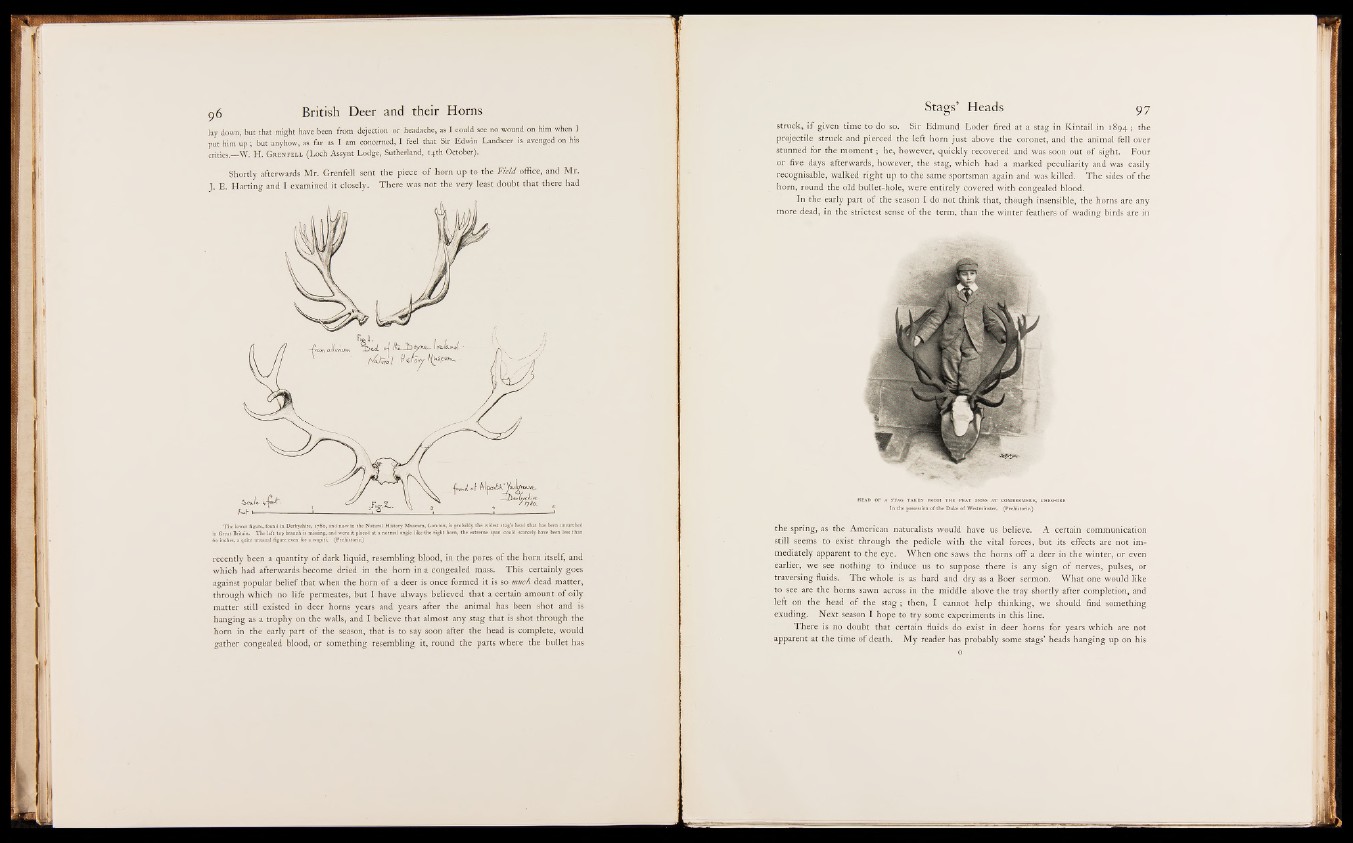
lay down, but that might have been from dejection or headache, as I could see no wound on him when I
put him up ; but anyhow, as far as I am concerned, I feel that Sir Edwin Landseer is avenged on his
critics.—W. H. Grenfell (Loch Assynt Lodge, Sutherland, 14th October).
Shortly afterwards Mr. Grenfell sent the piece of horn up to the Field office, and Mr.
J. E. Harting and I examined it closely. There was not the very least doubt that there had
recently been a quantity o f dark liquid, resembling blood, in the pores o f the horn itself,, and
which had afterwards become dried in the horn in a congealed mass. This certainly goes
against popular belief that when the horn o f a deer is once formed it is so much dead matter,
through which no life permeates, but I have always believed that a certain amount o f oily
matter still existed in deer horns years and years after the animal has been shot and is
hanging as a trophy on the walls, and I believe that almost any stag that is shot through the
horn in the early part o f the season, that is to say soon after the head is complete, would
gather congealed blood, or something resembling it, round the parts where the bullet has
struck, i f given time to do so. Sir Edmund Loder fired at a stag in Kintail in 1894 ; the
projectile struck and pierced the left horn just above the coronet, and the animal fell over
stunned for the moment.; he, however, quickly recovered and was soon out o f sight. Four
or five days afterwards, however, the stag, which had a marked peculiarity and was easily
recognisable, walked right up to the same sportsman again and was killed. T h e sides o f the
horn, round the old bullet-holè, were entirely covered with congealed blood.
In the early part o f the season I do not think that, though insensible, the horns are any
more dead, in the strictest sense o f the term, than the winter feathers o f wading birds are in
the spring, as the American naturalists would have us believe. A certain communication
still seems to exist through the pedicle with the vital forces, but its effects are not immediately
apparent to the eye. When one saws the horns off a deer in the winter, or even
earlier, we see nothing to induce us to suppose there is any sign o f nerves, pulses, or
traversing fluids. T h e whole is as hard and dry as a Boer sermon. What one would like
to see are the horns sawn across in the middle above the tray shortly after completion, and
left on the head o f the stag ; then, I cannot help thinking, we should find something
exuding. Next season I hope to try some experiments in this line.
There is no doubt that certain fluids do exist in deer horns for years which are not
apparent at the time o f death. M y reader has probably some stags’ heads hanging up on his